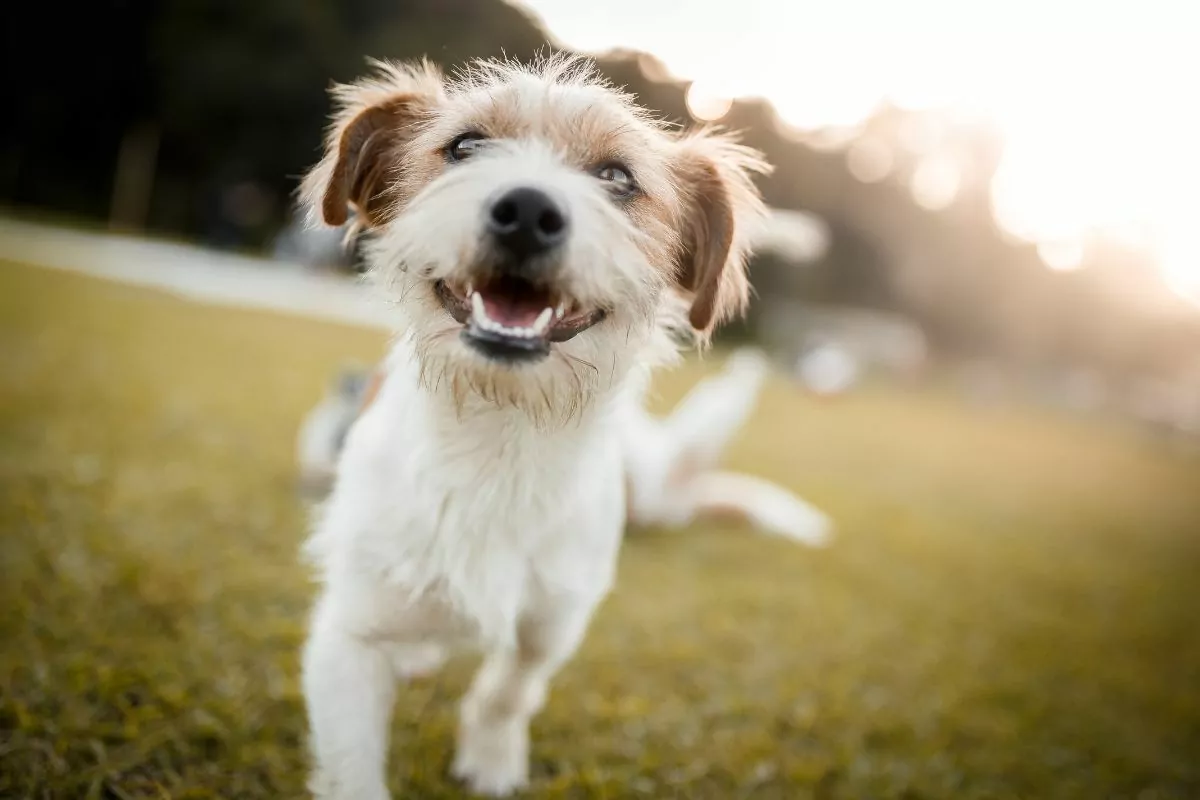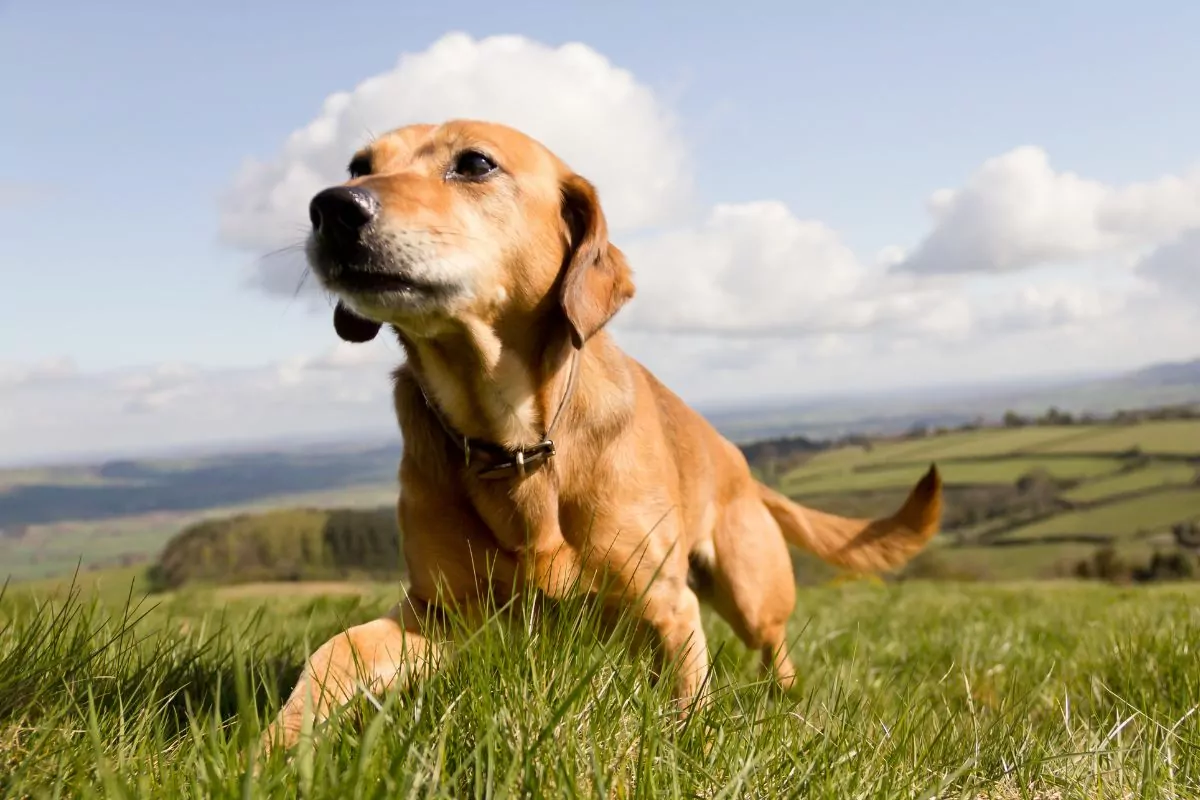What are Jowls on a Dog?
What are jowls on a dog? Dog jowls are loose flaps of skin on the dog’s cheeks or throat. Dog’s jowls also have excess skin, connective tissue, and a thin, fat layer. All dogs have jowls, but some have floppy, prominent, and unique-looking jowls. Big jowls stand out and are very cute.

What’s Their Purpose?
Jowls have beneficial purposes for a dog:
Offer Protection
Jowls protect dogs’ faces from predators and other dogs; if a dog has droopy jowls, it will be hard for another dog to grab their face due to the unpredictable movement of the jowls when the dog is moving. The jowls also guard against sharp teeth in a dog’s fight. There is a high chance for dogs to fluff if another dog grabs its jowls.
Retain Moisture
Jowls help to retain saliva or water in a dog’s mouth to moisturize and prevent the jowls from drying out. Dogs with big droopy jowls drool more than others.
Keep Water Out
Dogs like Newfoundland breeds use their mouth to rescue people from the water; jowls help to keep excess water from getting in the mouth and airways by trapping large air bubbles close to the mouth.
They Help in Scent and Tracking
Jowls help dogs waft the smell toward the noise when sniffing a scent trail, and it is beneficial to dogs tracking scent or doing scent-focused work. Large jowls make it easy for hunting dogs to carry their prey.
Dog Breeds With Jowls
All dogs have jowls, but some have bigger jowls making them heavy droolers, and some only drool when begging. Some of the common dog breeds with droopy jowls are
Bloodhound Dog
Bloodhound Dog is prominent with large jowls because of the overlapping skin on either side of the mouth. The Bloodhound is a huge breed belonging to the smell hound group of dogs.
Bloodhound Dogs are tan, brown, or black with floppy ears, square-shaped heads, long noses, and drooping lips.
Bloodhound Dogs have a good smell sense: They have 230 million scent receptors which is 40 times more than the human nose.
Bulldogs
Bulldogs are a popular breed, typically heavy and have short legs, making them appear stout. Originally, Bulldogs were for hunting and bull baiting, and the large loose jowls offered them protection.
Bulldogs have different sizes and shapes, and the most common is the square-shaped muzzle with deep and wide jaws.
Bulldogs have wrinkled faces due to their short skin, which causes extra folds on the face. Bulldog droopy jowl and loving expressions make them a popular family breed.
Bullmastiff
A Bullmastiff is also known as a Newfy. Bullmastiff is an English breed that originated in the late 1800s, and it played various roles, such as guarding properties and livestock, but today it is a common family pet.
A Bullmastiff is also a dog water and rescuer, which is the purpose of the big jowls. Bullmastiff’s large jowls trap air to assist with breathing when in the water. The Bullmastiff breed mixes English Bulldog, Newfoundland, and Mastiff.
Neapolitan Mastiff
A Neapolitan Mastiff is a type of breed with many wrinkles on the face, a large black nose, floppy ears hanging on the head sides, square muzzles, and large jowls. The origin of the Neapolitan Dog is in Naples City, Italy. A Neopolitan dog is known as the Italian Mastiff because Italian nobility used it for protection.
Neopolitan Mastiffs have numerous jowls from loose skin folds and thick lips; the loose skin gives the dogs saggy cheeks.
Boxer
A Boxer Dog is a medium-sized and stocky breed from Germany. It is easy to identify a Boxer breed because of its long jowls and fairly small size. Boxer’s jowls are bigger than Brittany Spaniels but smaller than Bullmastiffs and Bloodhounds.
Boxers are intelligent and loyal, and the main purpose of breeding them is to act as police guard dogs due to their excellent sense of smell.
Newfoundland
Newfoundland Dogs are known for their friendly temperament and gigantic size “Newfies.” The purpose of breeding Newfoundland Dogs was to help fishermen to retrieve their boats in the water, and their pronounced jowls help them breathe when swimming.
Basset Hounds
Basset Hounds are Hound Dogs with short legs and long ears. Originally Basset Hounds are from France, and the aim of breeding them was to hunt animals such as hares, otters, foxes, rabbits, hares, and badgers in dense underbrush or rough terrain where other dogs can’t go.
Basset Hounds have droopy eyes and wrinkled muzzles, and their prominent jowls and general demeanor make you imagine they are always smiling.
Basset Hounds are friendly, affectionate, loving, and reliable; they love to give kisses after feeding them. But can get lonely quickly.
Saint Bernard
Saint Bernard is prominent for its large, floppy jowls and friendly nature. The breeding of Saint Bernard was to rescue animals in the snowy Swiss Alps. Their large jowls help them to pick up the scents of lost mountaineers.
Tibetan Mastiff
Tibetan Mastiff is a guard dog with menacing looks and prominent jowls. The Tibetan Mastiff is a guard dog with a stern face and big jowls or saggy cheeks. The Tibetan Mastiff is among the world’s largest and most expensive dogs, and their intimidating nature makes them guard dogs.
Great Danes
Great Danes are large, naturally gentle, affectionate, and regal-stature dogs. Great Dane jowls are adorable and make the star in cartoons and comic strips, easy-going dispositions, and companion animals. It is essential to learn about Great Danes before adopting one.

Common Canine Jowl Issues
Sometimes dog jowls trap water, saliva, and food in their loose skin folds. The trapped moisture and particles can cause bacterial and yeast infections in the jowls. Symptoms of dog jowls infections are:
Oral Papillomavirus
Mostly, oral papillomavirus occurs in young dogs under two years old. A contagious virus causes benign tumors around the mouth. The tumor is pink-like, with irregular surfaces on the inside and outside of the mouth. These infections can be very painful and affect overall oral health.
The infection sometimes disappears, but you can use antibiotics to utilize the tumor unless it needs surgical removal.
Lip Fold Dermatitis
Lip fold dermatitis is a common infection in breeds with lots of skin around the jowls. Dermatitis can also affect other body parts that fold, such as the tail or vulva.
Lip fold dermatitis causes the infected area to be red, swollen, and moist with a strong evolving smell. Treating the infection involves hair removal and cleaning twice daily in the infected area for two weeks.
Red Swollen Jowls
Dogs may have swollen faces resulting from abscesses, allergies, or dental problems. If you recognize any swelling around the mouth or on the jowls, take the dog to the veterinarian immediately.
Drooling
During summer, dogs drool more, especially when playing or walking outside, depending on the type of dog. It is advisable to keep dogs cool in summer, especially large breeds with many jowls.
Excessive drooling can cause heatstroke, and keeping the dog in a cool place for ventilation is essential. Give the dog cool water and let it lay on a cool mat after every walk.
Why do Dogs Drool Excessively on One Side of the Mouth?
Dogs’ jowls drooping on one side of the mouth indicates weak muscles that make the dog’s jowl droop. Many medical conditions cause facial paralysis that can lead to feeding problems. Excess salivation can also cause more trivial causes.
A wound is also common and can lead to pain, bleeding, and drooling. Excessive drooling can also result from bacterial or viral infections or the consumption of poisonous food.
Bleeding Jowls
If you notice the dog’s jowl bleeding, it may hurt its gum when chewing food, but continuous can be severe. The trauma can cause other bleeding depending on the severity of the accident.
Gingivitis can cause dog jowls to bleed, which is very painful. If your dog experiences blood clots or bleeds profusely, it will need emergency medical attention. If the dog losses too much blood, it may require a transfusion and IV to stabilize it.
How and Why to Clean Dog Jowls
It is important to clean the dog’s jowls regularly, especially if it has a lip fold dermatitis history. Removing debris and moisture from the lip fold creates less growth environment for fungal and bacterial infections.
You should use a veterinarian’s recommended product when cleaning the dog’s jowls, and cleaning with water contributes to more moisture issues. Medicated wipes or washes which contain chlorhexidine or benzoyl peroxide can be good, but you should consult the veterinarian for recommendations.
To clean your dog’s jowls, spread the skin folds apart and wipe the inside slowly but deeply using a soft rag soaked in clean water or medicated wipes. Removing debris and moisture from deep skin folds is also important when wiping.
Follow the veterinarian’s recommendation on rinsing. Residual moisture can cause jowls irritation, and a veterinarian can recommend the application of medicated ointment on the skin fold after cleaning.
If your dog does not have skin problems around the jowls, the last thing you need to do is to cause skin irritation by applying harsh cleaners. It is critical to discuss this with a veterinarian before cleaning the dog’s jowls.

The Words Out
If you notice an awful smell from the dog’s jowls, it may result from bacteria or fungal infections. Cleaning the deep folds of the dog jowls regularly with antibacterial and antifungal detergents prevents bacteria and yeast build-ups that proliferate from trapped food, moisture, or food.
It is crucial to monitor the jowls; antibiotics are necessary for some jowls infections. Dogs with chronic infections around their jowls may need corrective surgery to address long-term hygiene problems.
An unhealthy diet, canine acne, and minor allergic reactions can cause crusty scabs. However, dogs can experience dog jowl crusty effects resulting from skin infections, skin cancer, irregular hormone regulation, or lip fold dermatitis.
Handling and cleaning lip folds can be challenging, especially if the dog doesn’t like its mouth handled, but with a little exercise, your dog will get used to jowl cleaning like other body parts.
Regularly examine and pay attention to your dog’s mouth for swelling, bad breath, tumors, redness, and teeth issues.
You can also do a home cleaning and brushing routine for your dog. Dog breeds with jowls are associated with drooling, especially when swelling or inflammation occurs. Oral hygiene helps with canine acne or pimples of the jowls on a dog. An ounce of prevention of jowl infections is worth a pound cure.
